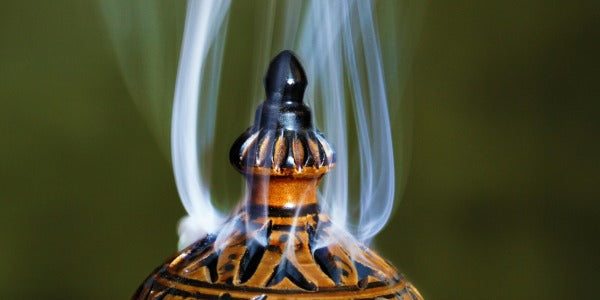
Incense, a bit of history
Share
Incense, a substance with ancient origins, has an extraordinary history spanning centuries of traditions and uses. This fragrant and aromatic material has always been associated with religious ceremonies, spiritual practices, and therapeutic uses in many cultures around the world.
The first evidence of the use of incense dates back about 5,000 years ago, in ancient Egypt. The Egyptians considered incense a sacred substance, associated with the god Ra, and it was used in various religious rites and as an offering to the gods. It was burned in gilded statues in their temples and tombs, and its smoke was believed to have the power to communicate with the gods and purify the air.
The use of incense then spread to all major ancient civilizations, including ancient Rome and Greece. The Romans, in particular, imported much of their incense from Arabia and India, and used it extensively in temples and during religious ceremonies. Its use was so widespread that incense became a highly prized commodity and was considered a symbol of social status.
However, incense was not limited to the Mediterranean region. In India, incense has a deep-rooted presence in culture and religion, where it is used in a variety of ways. One of the most popular forms of incense in India is "dhoop," which is a mixture of herbs, resins, and essential oils, kneaded into a paste that can be shaped into many different shapes, such as cones or sticks. Indian incense has long been associated with the concept of purification and spirituality, and is used in many religious celebrations and yogic practices.
Frankincense also has a rich and profound history in the Middle East. The Arabian region has been an important source and trading point for incense for centuries. Its trade routes connected the Mediterranean world with India and the Far East, transporting incense and other precious goods. Frankincense was considered a highly valuable gift and was often exchanged as currency or as tribute by kings and rulers.
Over the centuries, incense has continued to be appreciated and used in many cultures around the world. Today, incense has become an integral part of many religious traditions, such as Buddhism, Hinduism, and Orthodox Christianity. Furthermore, many people use incense for therapeutic purposes, such as relaxation, meditation, and creating a soothing atmosphere.
Despite the evolution of tastes and trends over the centuries, incense has retained its allure and importance in modern society. Its unique fragrance and relaxing properties continue to fascinate and inspire people around the world, allowing them to immerse themselves in a millennia-old history of spirituality and well-being.
The first evidence of the use of incense dates back about 5,000 years ago, in ancient Egypt. The Egyptians considered incense a sacred substance, associated with the god Ra, and it was used in various religious rites and as an offering to the gods. It was burned in gilded statues in their temples and tombs, and its smoke was believed to have the power to communicate with the gods and purify the air.
The use of incense then spread to all major ancient civilizations, including ancient Rome and Greece. The Romans, in particular, imported much of their incense from Arabia and India, and used it extensively in temples and during religious ceremonies. Its use was so widespread that incense became a highly prized commodity and was considered a symbol of social status.
However, incense was not limited to the Mediterranean region. In India, incense has a deep-rooted presence in culture and religion, where it is used in a variety of ways. One of the most popular forms of incense in India is "dhoop," which is a mixture of herbs, resins, and essential oils, kneaded into a paste that can be shaped into many different shapes, such as cones or sticks. Indian incense has long been associated with the concept of purification and spirituality, and is used in many religious celebrations and yogic practices.
Frankincense also has a rich and profound history in the Middle East. The Arabian region has been an important source and trading point for incense for centuries. Its trade routes connected the Mediterranean world with India and the Far East, transporting incense and other precious goods. Frankincense was considered a highly valuable gift and was often exchanged as currency or as tribute by kings and rulers.
Over the centuries, incense has continued to be appreciated and used in many cultures around the world. Today, incense has become an integral part of many religious traditions, such as Buddhism, Hinduism, and Orthodox Christianity. Furthermore, many people use incense for therapeutic purposes, such as relaxation, meditation, and creating a soothing atmosphere.
Despite the evolution of tastes and trends over the centuries, incense has retained its allure and importance in modern society. Its unique fragrance and relaxing properties continue to fascinate and inspire people around the world, allowing them to immerse themselves in a millennia-old history of spirituality and well-being.
